In this blog post, I will demonstrate how to show hard drives on Mac desktop using Intune. By default, Finder hides disks, so users won’t see them on their desktop. Users can manually enable this by opening Finder Settings and selecting the Hard disks checkbox.
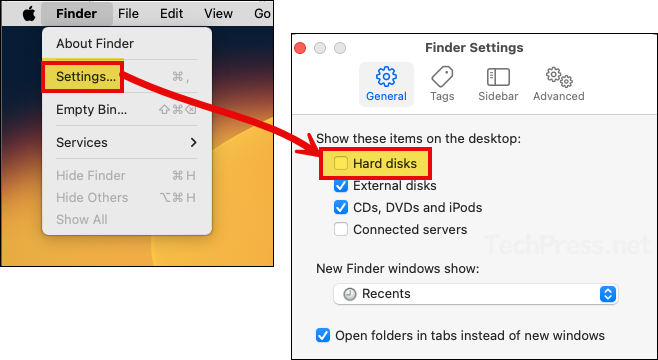
If you are managing your Mac devices using Intune, you can easily control this setting via a Settings catalog policy called Show Hard Drives on Desktop. It’s a simple toggle switch, just enable it to show the hard drives. Find below details about the Settings catalog policy. Continue reading for step-by-step instructions on creating this policy, monitoring, and end user experience.
| Profile type | Category | Setting | Status |
|---|---|---|---|
| Settings Catalog | User Experience > Finder | Show Hard Drives on Desktop | True: Hard drives will be shown on the desktop False: Hard drives will not be shown on the desktop |
Contents
Show Hard Drives on Mac Desktop Intune Policy
Let’s create a device configuration policy on Intune admin center and show the hard drives on macOS desktop.
- Sign in to the Intune admin center > Devices > macOS > Configuration > Create > New Policy.
- Click on the Profile type drop-down and select Settings Catalog. Click Create.
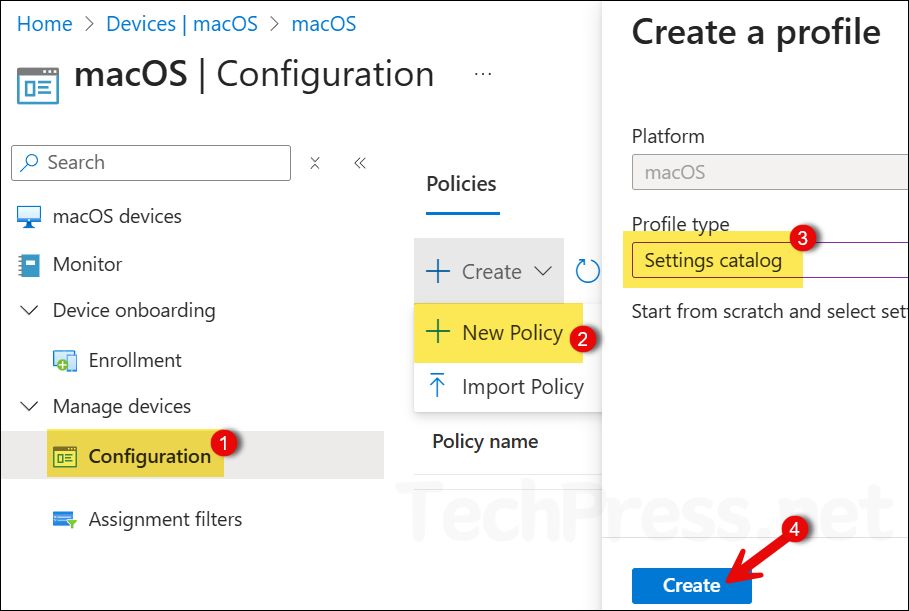
- Basics tab: Provide a Name and Description of the policy. For example: Show Hard Drives on Mac.
- Configuration tab: Click on + Add settings and use the Settings picker to search using hard drives keyword and select User Experience > Finder category. Select Show Hard Drives on Desktop policy setting.
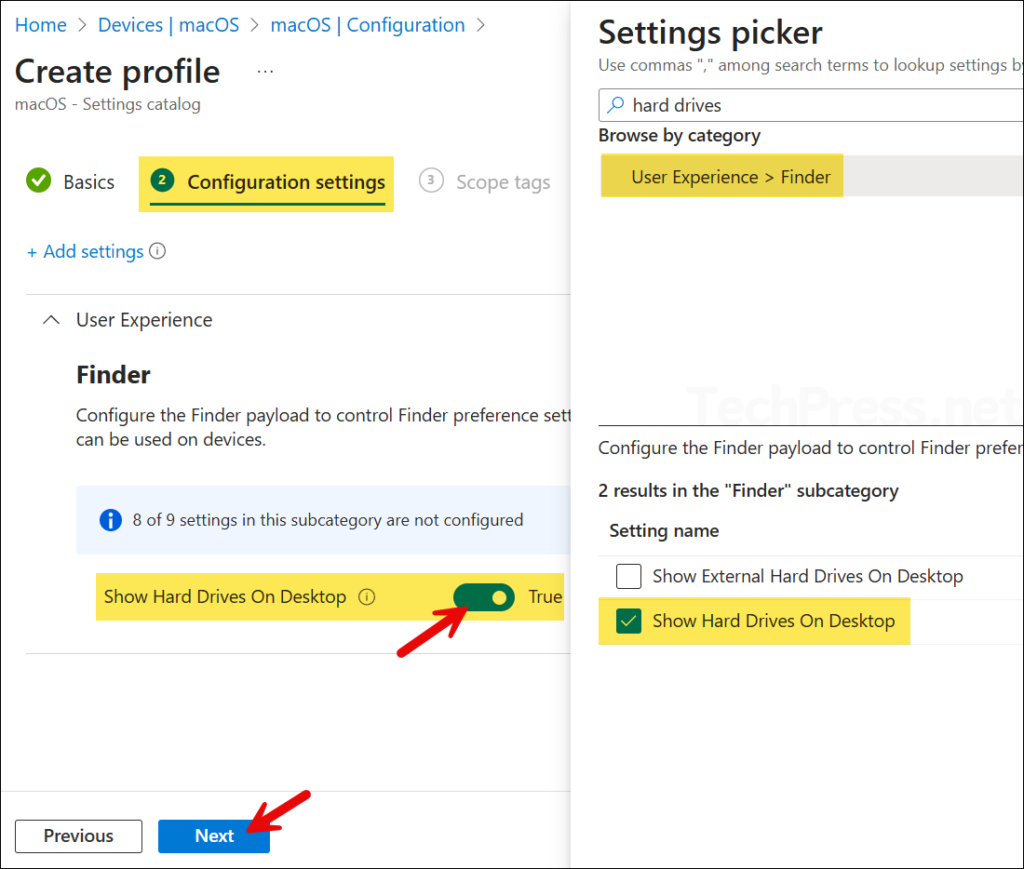
- Scope tags (optional): This is an optional configuration, skip it by clicking on Next. A scope tag in Intune is an RBAC label you add to resources (policies, apps, devices) to limit which admins can see and manage them.
- Assignments: Create or use an entra security group containing macOS users or devices. Click on Add groups and select the group to assign this policy.
- Review + create: Review the deployment summary and Click on Create.
Sync Intune Policies
The device check-in process might not begin immediately. If you’re testing this policy on a test device, you can manually kickstart Intune sync from the device itself or remotely through the Intune admin center.
Alternatively, you can use PowerShell to force the Intune sync on Windows devices. Restarting the device is another way to trigger the Intune device check-in process.
Monitor Show Hard Drives Intune Policy
- Go to Devices > macOS > Configuration. Select the profile you want to monitor.
- Check under Device and user check-in status to confirm the success of the profile deployment.
- For additional details, click Device Assignment Status and Per Setting Status.
End User Experience
After the Intune device check-in process is completed, you will find that hard drives are now showing on the user’s desktop. If you now check Finder settings, you will find that the Hard disks checkbox is also enabled. This setting is now managed by Intune, if users manually switch it off, it will reapply during the next Intune device check-in and hard drives will be shown again.
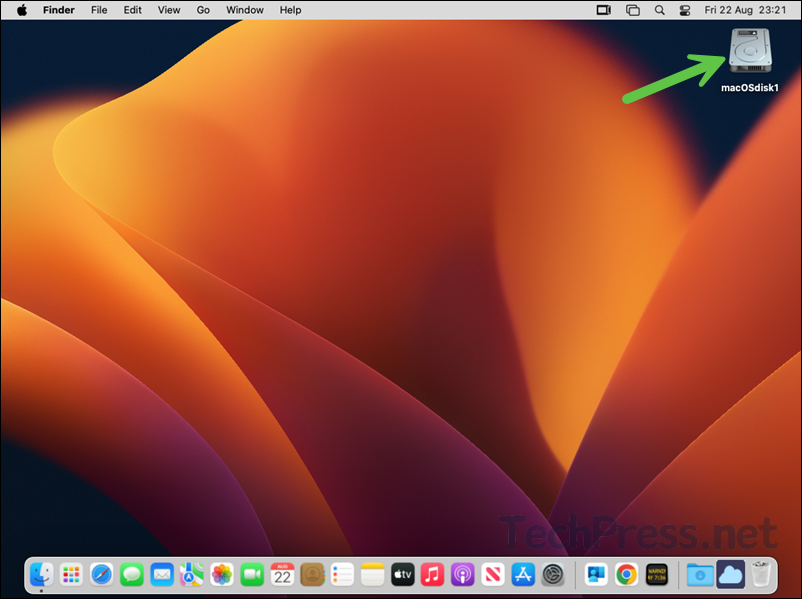
Show External Hard Drives on Mac Desktop Intune Policy
There is another policy in the settings catalog under the same category User experience > Finder. The setting is called Show External Hard Drives on Desktop. You can use it to also show external hard drives on user’s desktop. Simply add this setting and set the toggle switch to true.
| Profile type | Category | Setting | Status |
|---|---|---|---|
| Settings Catalog | User Experience > Finder | Show External Hard Drives on Desktop | True: External Hard drives will be shown on the desktop False: External Hard drives will not be shown on the desktop |
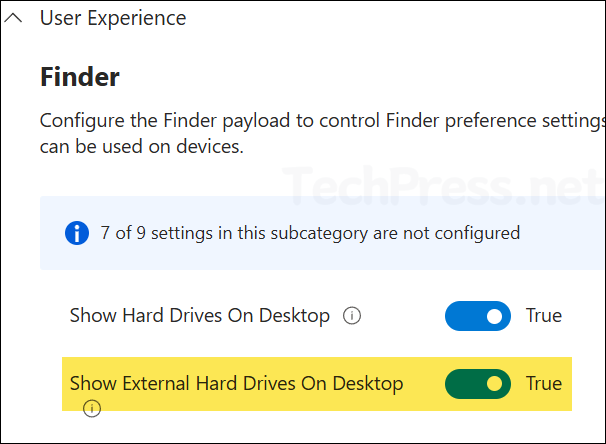
Troubleshooting
For troubleshooting device configuration policy related issues, you can read the log files to investigate. Refer to IntuneMDMDaemon*.log and IntuneMDMAgent*.log files, which could provide useful information for troubleshooting and finding out the root cause of the issue. For more information about how to locate these files on a macOS device, see my other blog post, Collect Intune Logs from macOS Devices.
